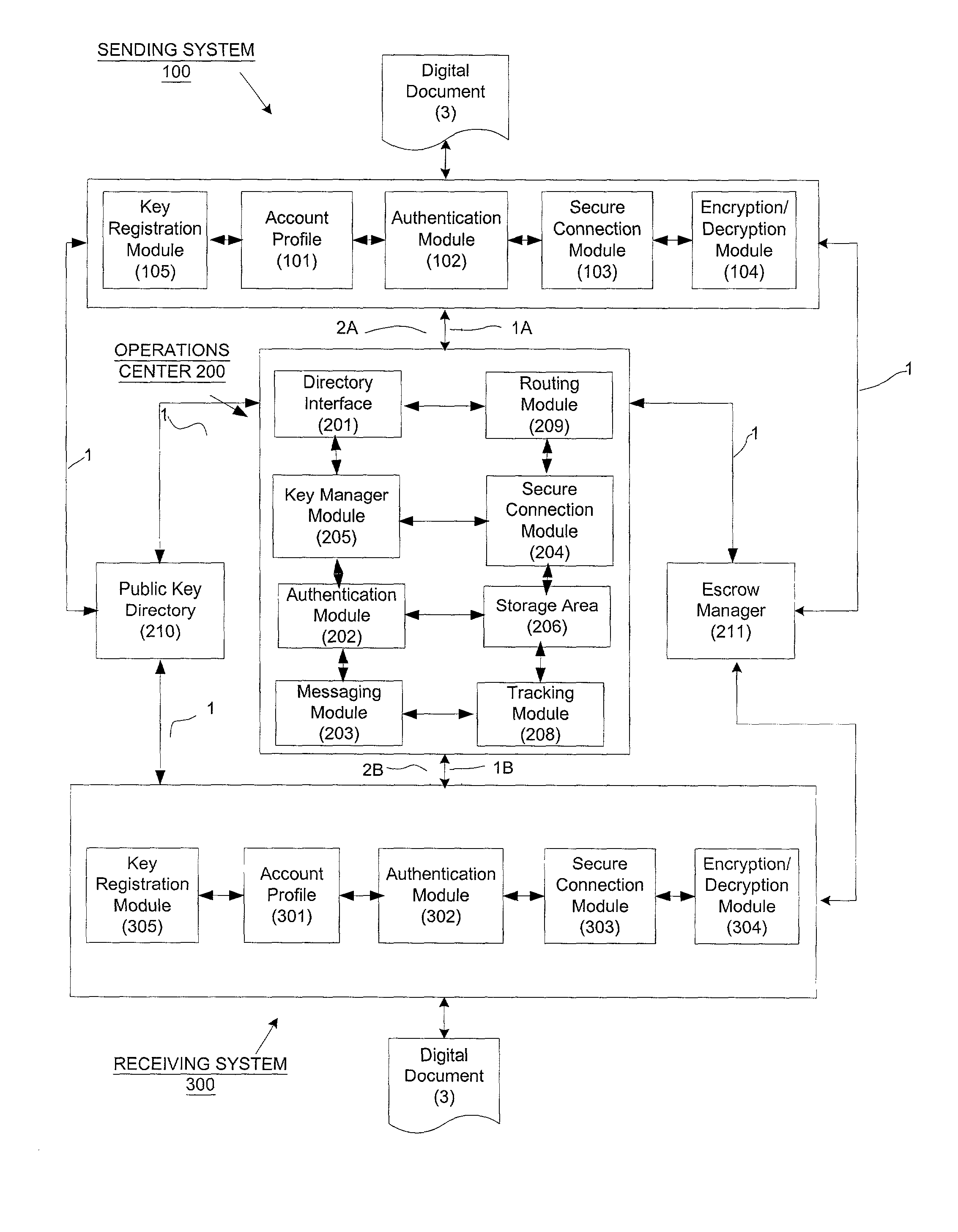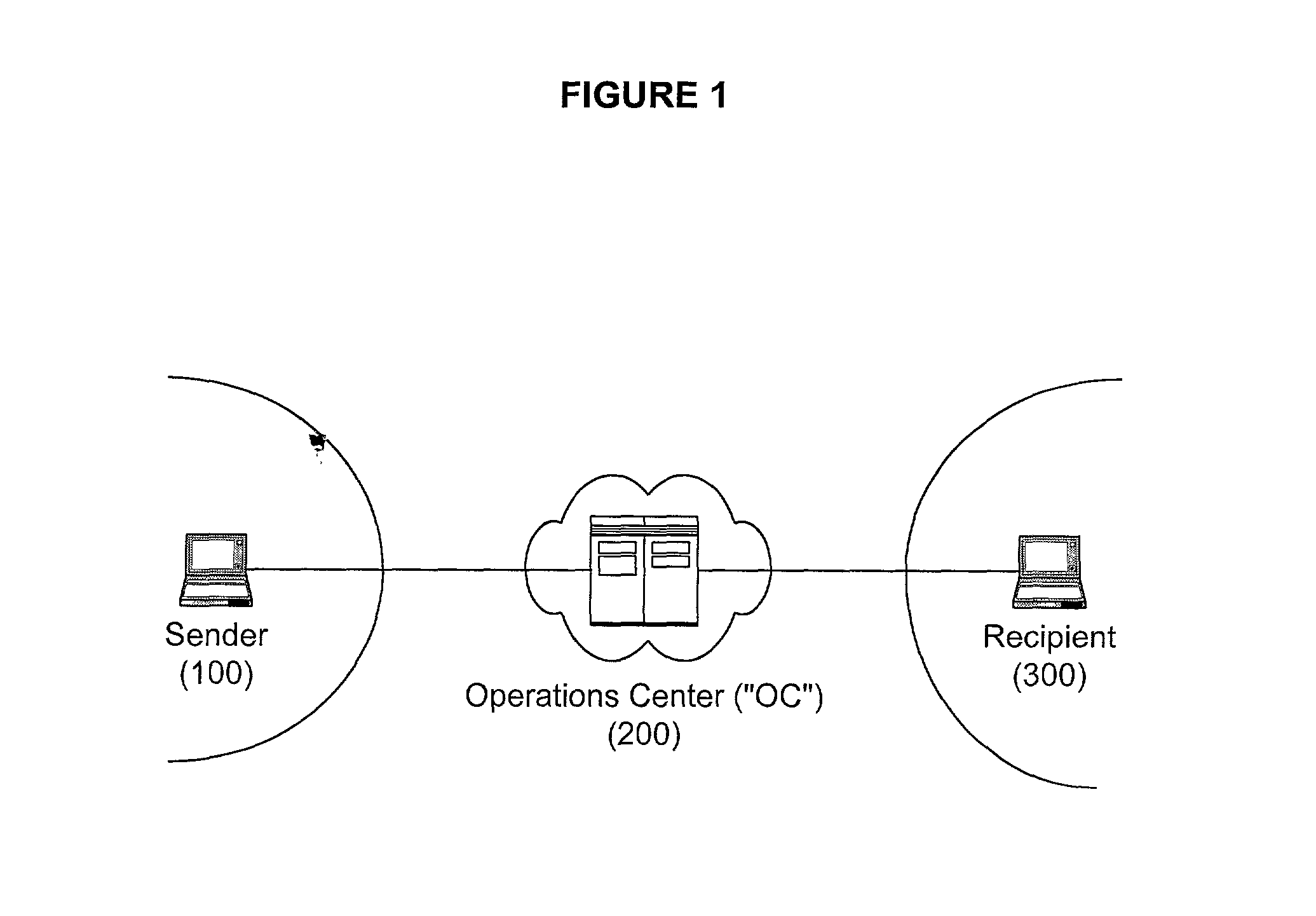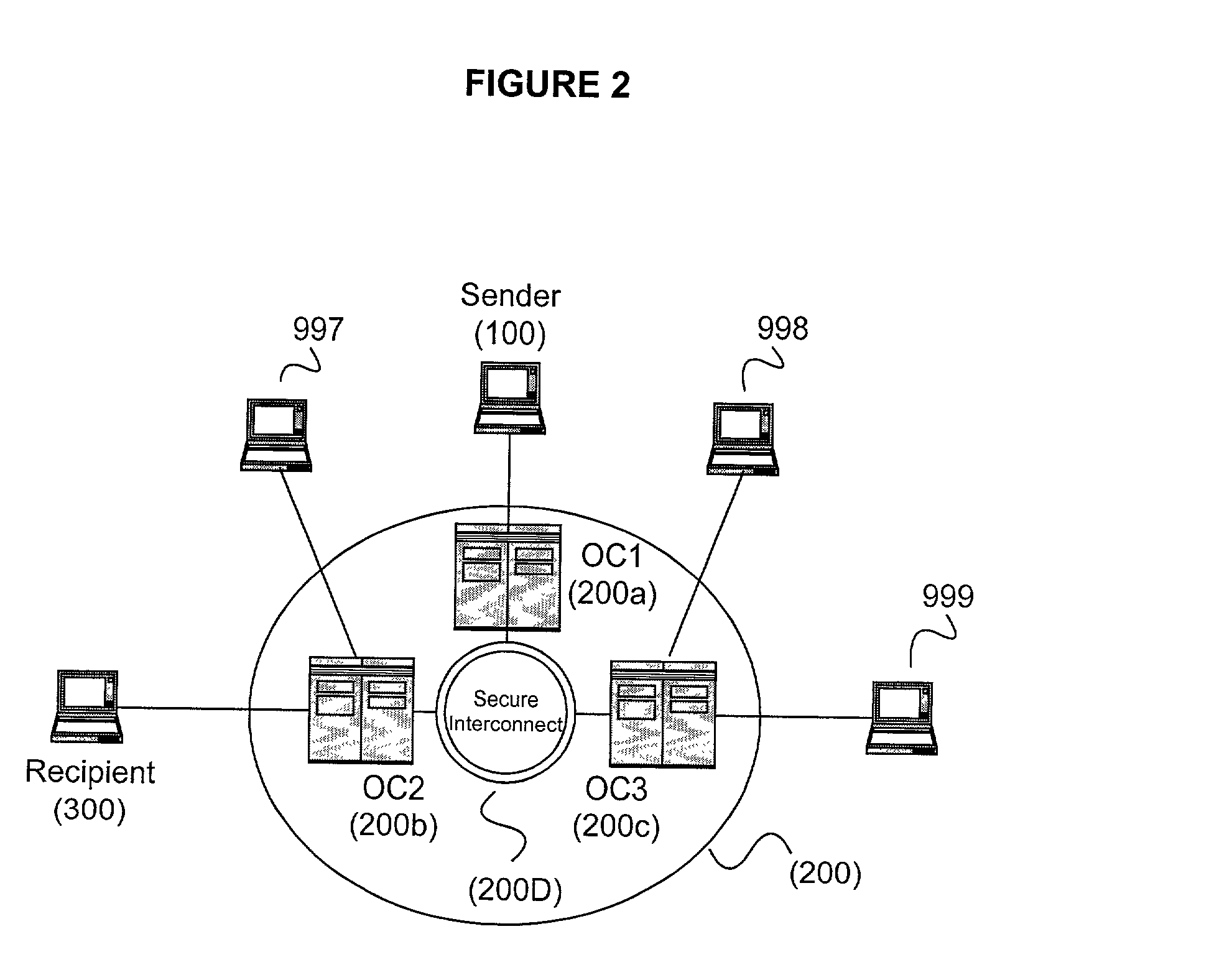While unsecured email is perhaps one of the most common electronic
delivery methods, it typically is not secure, flexible or particularly reliable.
However, neither of these
delivery methods is fully satisfactory with respect to security or reliability and generally is no better than unsecured email with respect to flexibility.
If a
third party intercepts this message, it will be unintelligible to the
third party since he presumably does not have enough information to decrypt the message (e.g., the
third party normally does not have the correct key required to decrypt the message).
By limiting access to the decryption method and keys, the sender can limit who is able to read an encrypted message.
However, secure email is delivered from the sender to the recipient using the same architecture and infrastructure as unsecured email and, therefore, suffers from many of the same drawbacks as unsecured email.
For example, secure email delivery services generally lack reliability due to the architecture of the email
delivery system and are limited to the same types of distribution as unsecured email.
An email message may be routed through several email servers on its way from the sender to the recipient, with each
server receiving the incoming message, determining the next
server on the message's journey, transmitting the message, and possibly leaving behind a copy causing unnecessary and unmanageable audit trails.
Since no single company or entity owns the entire delivery chain for the email message, no one company or entity can guarantee reliable delivery or integrity of the message.
The storing-and-forwarding of email documents through several servers owned by multiple parties means that email messages get lost, delayed, and corrupted.
This makes the overall delivery service unreliable or untrackable, and this is just in the context of a delivery from one sender to one recipient.
These problems are aggravated if the document is to be routed among multiple recipients, for example along a routing
list over
the Internet.
Encrypting an email message may provide some protection against unwanted disclosure during transit, but it does not address the reliability issue, does not guarantee that the message will be delivered to the recipient, and does not provide the flexibility to support more sophisticated routing lists with end to end tracking.
The SSL approach suffers from many drawbacks.
Typically, these systems would at most require the sender and the recipient to authenticate themselves using passwords, which is weak security.
In other words, there is no real assurance that either the sender or the recipient actually is who he claims to be.
As a result, there is also a lack of non-repudiation, meaning that at a later time, the sender can plausibly deny having sent the document simply by pointing out that there is no strong evidence of who actually sent the document.
Another drawback is that these systems lack end-to-end security, because SSL secures only the channels.
In addition, if the
Web site is untrustworthy (or happens to hire an untrustworthy employee), the document will be vulnerable.
However, these systems are difficult to use since they require the sender to communicate the
password out-of-band to the recipient, a process that is cumbersome and fraught with security risks.
Such a
system also does not guarantee non-repudiation, since it neither strongly authenticates a user, nor supports digital signatures, nor ensures that only the recipient could open a delivery.
These systems provide end-to-end
content security, but are extremely difficult to use because of the need for users to manually obtain the keys and exchange keys prior to
encryption.
In addition, a
system that requires optional use of certificates cannot guarantee non-repudiation.
As a result, more complex deliveries, such as those using routing lists, can be difficult to implement.
Secure email services typically cannot implement end to end tracking for the reasons discussed above.
SSL services typically cannot provide strong security.
Neither the SSL approach nor the secure e-mail approach currently provides sufficient security and reliability to facilitate a robust implementation of routing lists over public networks.
In contrast, existing
workflow systems can facilitate the routing of documents between various recipients but they typically are limited to internal communications and cannot be used securely or reliably to communicate with the outside world.
However, companies are reluctant to store their documents in databases which are widely accessible from the outside due to security concerns.
This approach is not suitable for use between different companies because companies typically are not willing to install common
software just to facilitate
workflow with one of its business partners.
Thus, in practice, current
workflow systems are confined to well-defined, closed communities.
 Login to View More
Login to View More  Login to View More
Login to View More 


